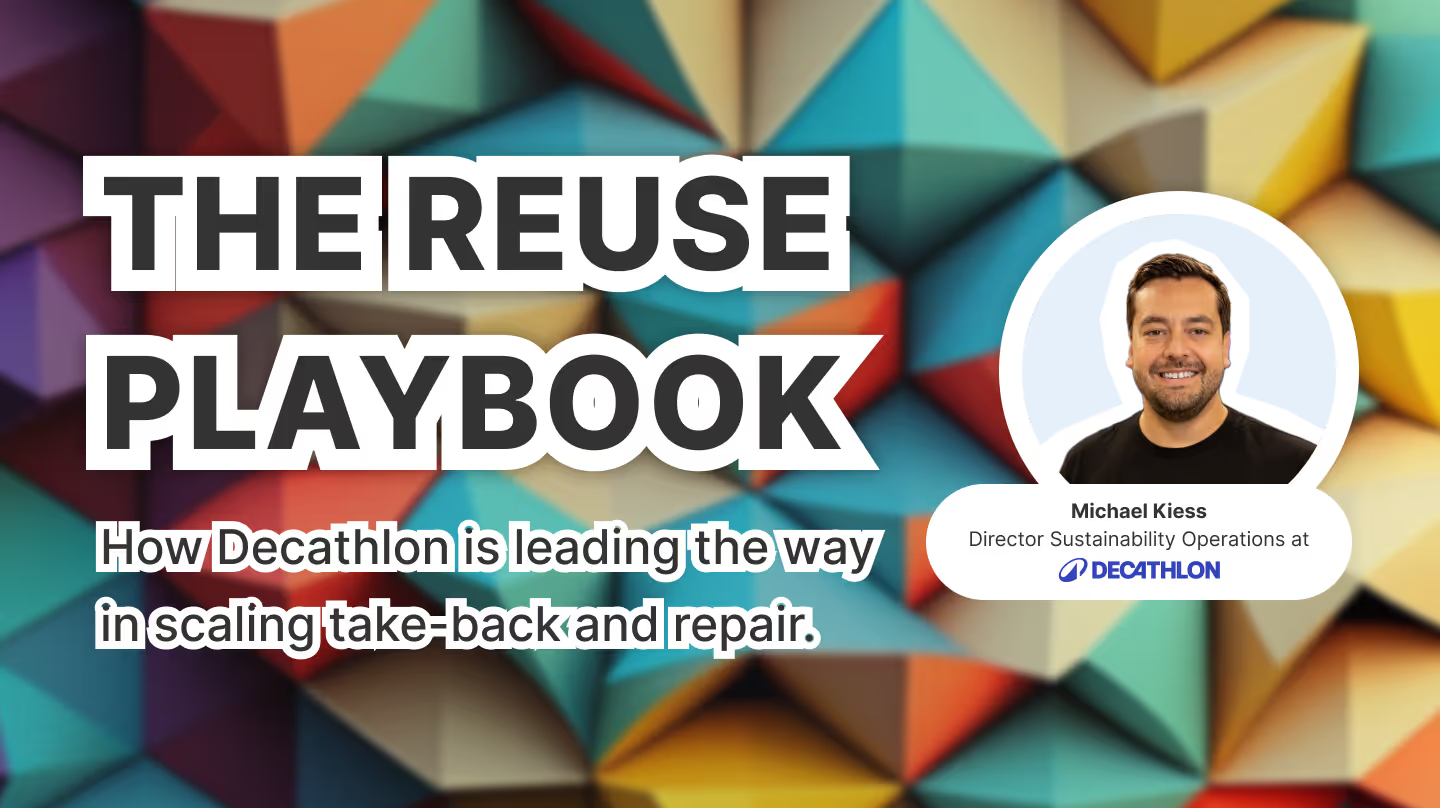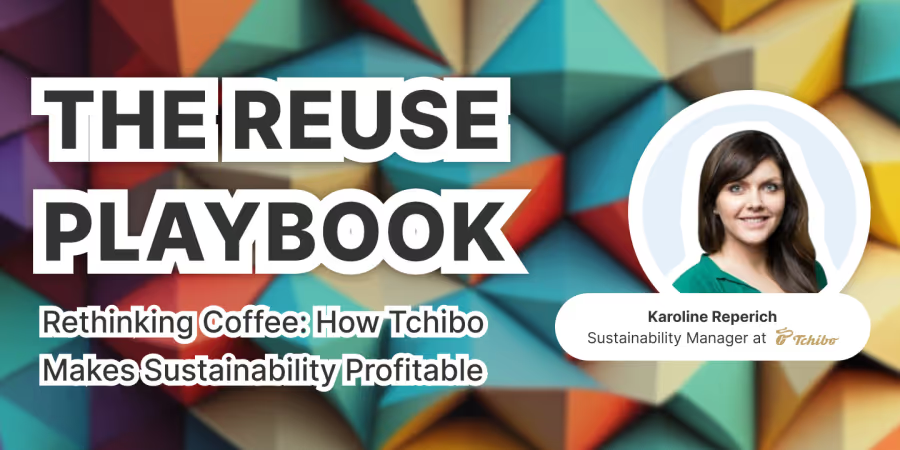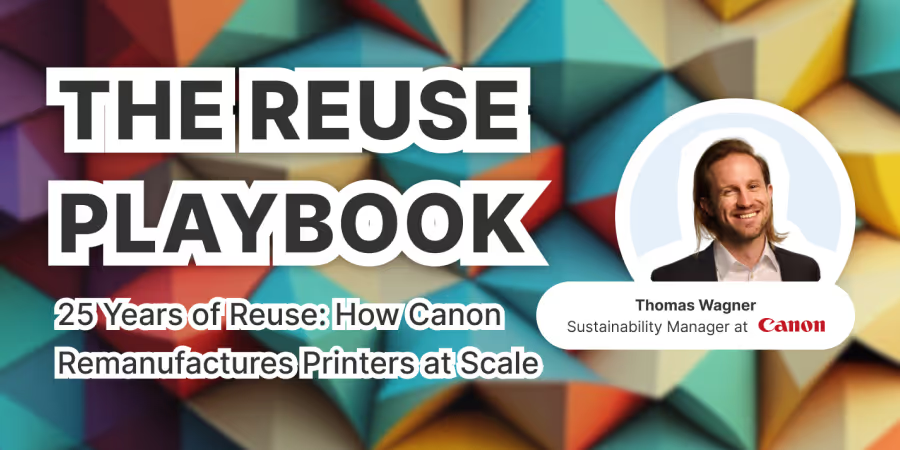In the very first edition of The Reuse Playbook, we had the pleasure of speaking with Michael Kiess – Director of Sustainability Operations at Decathlon Germany. Together, we looked behind the scenes of one of the largest buyback and reuse programs in the sports retail industry: from its origins as the “Trocathlon” flea market to today’s second-use offering with take-back, refurbishment, and resale.
What impressed us most? How consistently Decathlon sees repair as the backbone of all circular services. How systematically the internal buy-in was built. And how clear the business case is. No greenwashing – but loyalty, data, and revenue potential. That’s what it’s all about.

Our learnings and key takeaways
🛠️ Reuse doesn’t start with tech – it starts with mindset
Decathlon’s buyback strategy evolved from a simple flea market format. Proof that circularity doesn’t have to start with complexity. Companies that listen to their customers often land naturally on circular solutions.
🧩 Repair is the backbone
No repair, no rental, no resale, no take-back. Decathlon is actively building service infrastructure – including expert repair workshops – and sending a clear message: operational excellence is what counts.
👥 The circular customer is more loyal – and more valuable
Customers who use circular services return three times more often than others – and they spend more. Circularity isn’t a cost driver. It’s a lever for loyalty and revenue.
🧪 Proof before scale
Decathlon started small: a handful of stores, manual processes, and clearly defined product categories. Only after testing came automation, scaling, and expansion into new countries. A playbook we also recommend at koorvi.
🌍 Not everything is worth it – and that’s okay
Second use has to make business sense. Kids’ bikes? Fast turnover. High-end e-bikes? High effort. That’s why Decathlon actively manages by product type, season, and price – avoiding unprofitable take-backs from the start.
📍 Local relevance beats central planning
Stores like Rosenheim or Kiel help decide what gets taken back and resold – depending on the season and local demand. Central provides the tools and framework; local brings the expertise. Decentralization as a success factor.
📈 Data speaks louder than persuasion
Metrics like stock lifetime, emissions saved, and new customer segments were enough to create internal buy-in. The team didn’t need convincing – the results did the talking.
🎯 25% revenue from circular isn’t a pipe dream
Today, around 2–3% of revenue comes from circular services. The goal? 25%. Because anyone serious about net zero has to take circular business models seriously – and scale them.
5 Personal Questions for Michael Kiess
To wrap up, we wanted to know: Who’s behind all those processes, strategies, and circularity stats? Five quick questions, five honest answers – getting a little more personal.
1. Aside from Decathlon, is there a company you think really gets it?
→ ReBike.
A young company with a sharp focus: refurbishing bikes – and doing it right. What started as a garage idea is now a professional refurbishment center. Michael appreciates their drive and their determination to just make it happen.
2. What sustainability buzzword do you think is completely overrated?
→ “Climate neutral.”
It’s used a lot – but rarely questioned. To Michael, it sounds more like marketing than real responsibility. He cares less about neutral numbers, and more about keeping products in use longer. Less talk, more action.
3. What won’t work anymore in your industry five years from now?
→ Products without service.
Whether it’s returns, repair, or support – anyone who just sells and disappears won’t last. Michael believes the era of one-way relationships is over.
4. What tool or app do you absolutely rely on in your daily life?
→ His calendar.
“If it’s not in there, it’s gone.” Michael needs structure – or things get messy. His calendar is his compass: not flashy, but effective.
5. What sparks new ideas for you?
→ Walks. Family. Silence.
New ideas rarely come in front of a screen. Michael likes to think while walking – or talking to people outside the day-to-day. Saying things out loud often reveals what’s really behind them.
🎧 Curious to hear more? Check out the full episode of The Reuse Playbook here: Listen now



